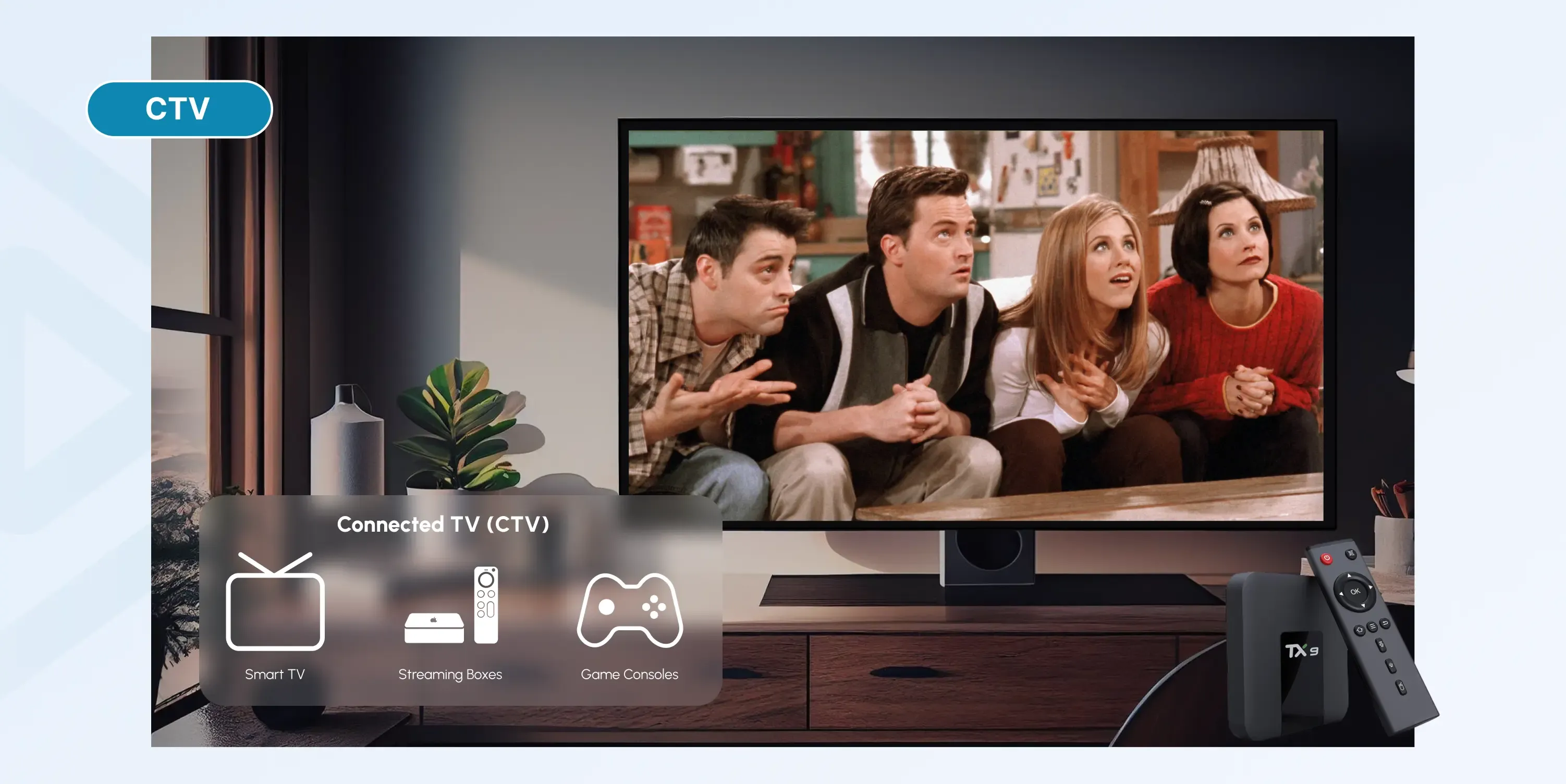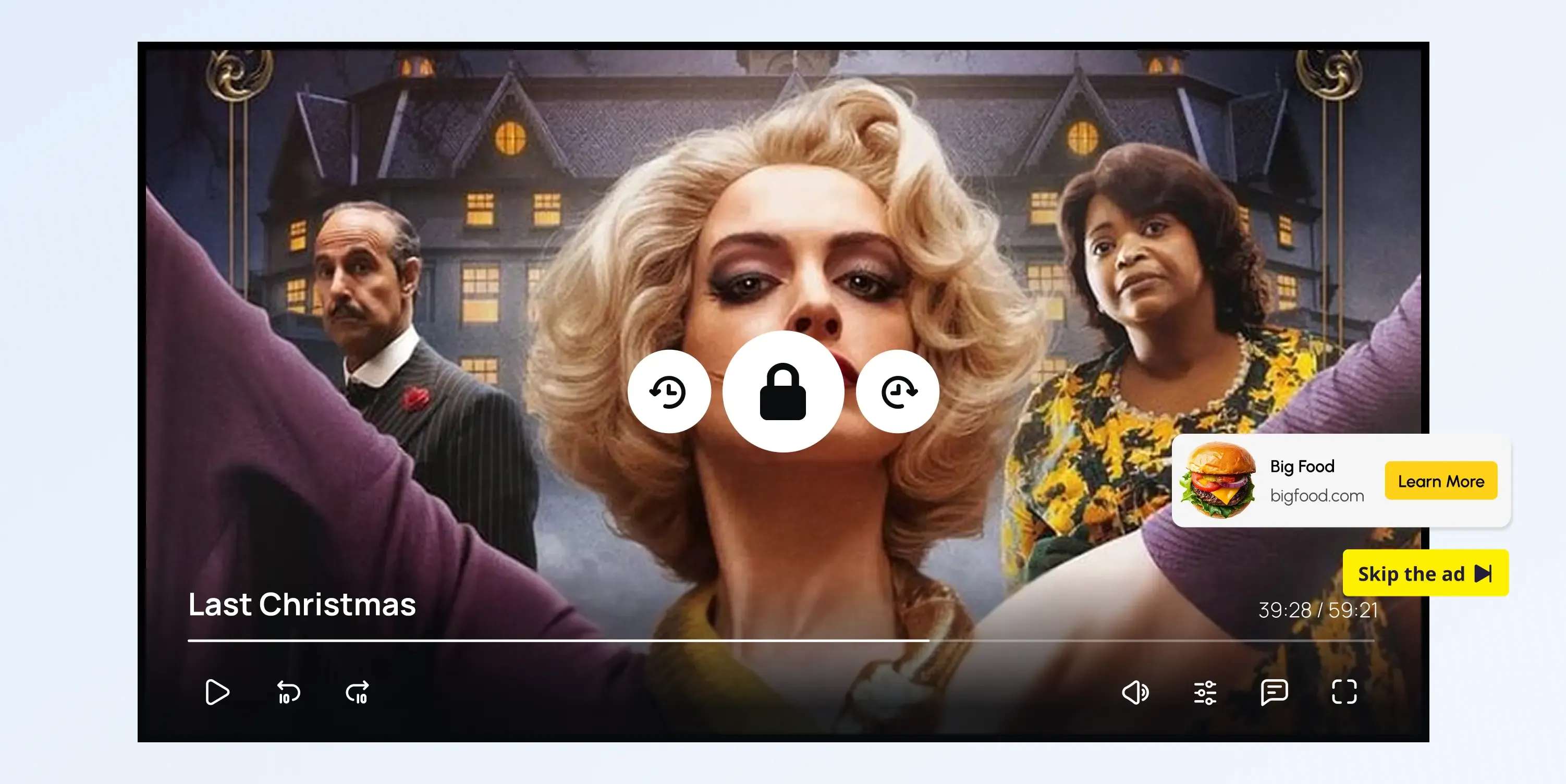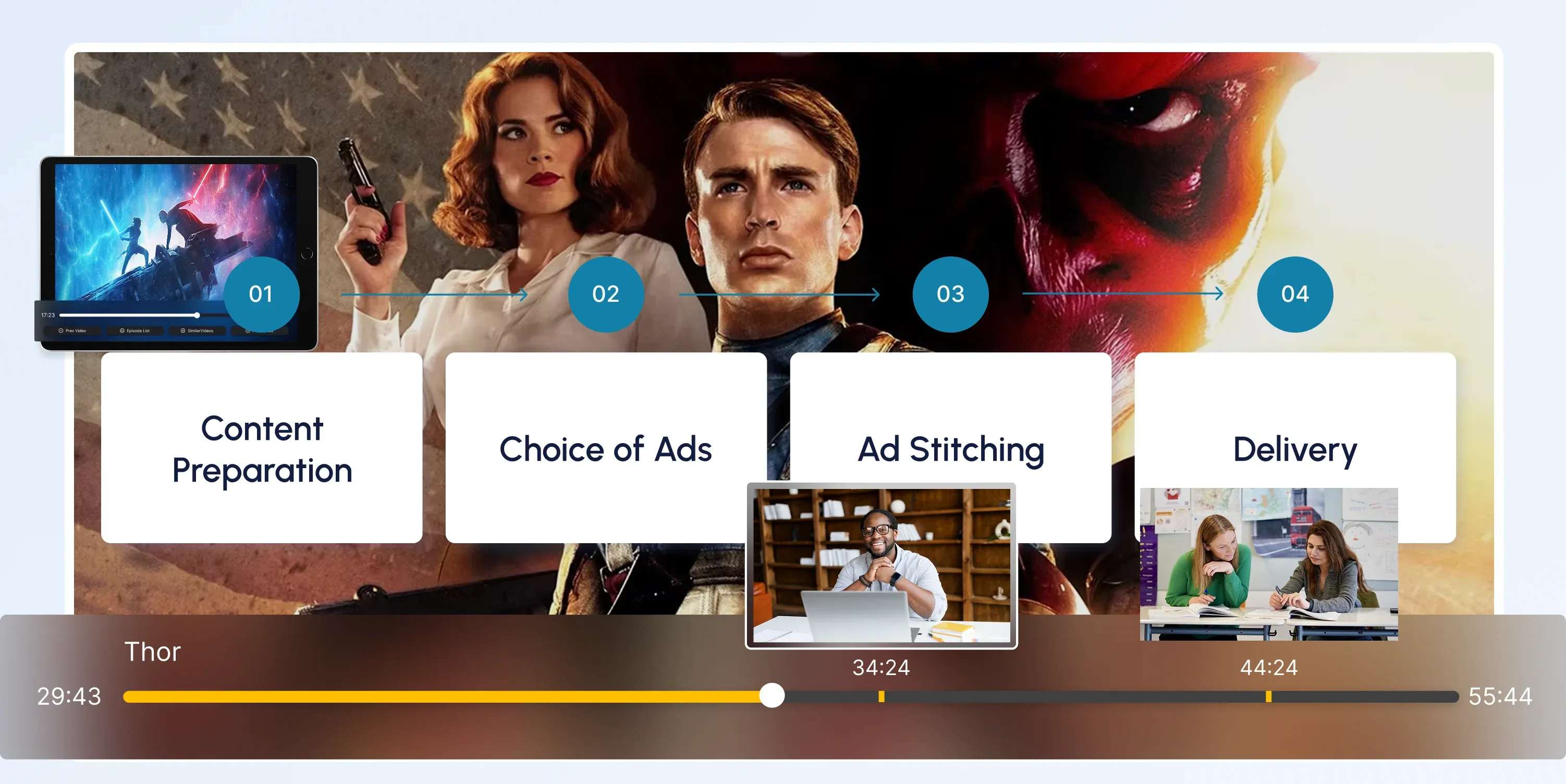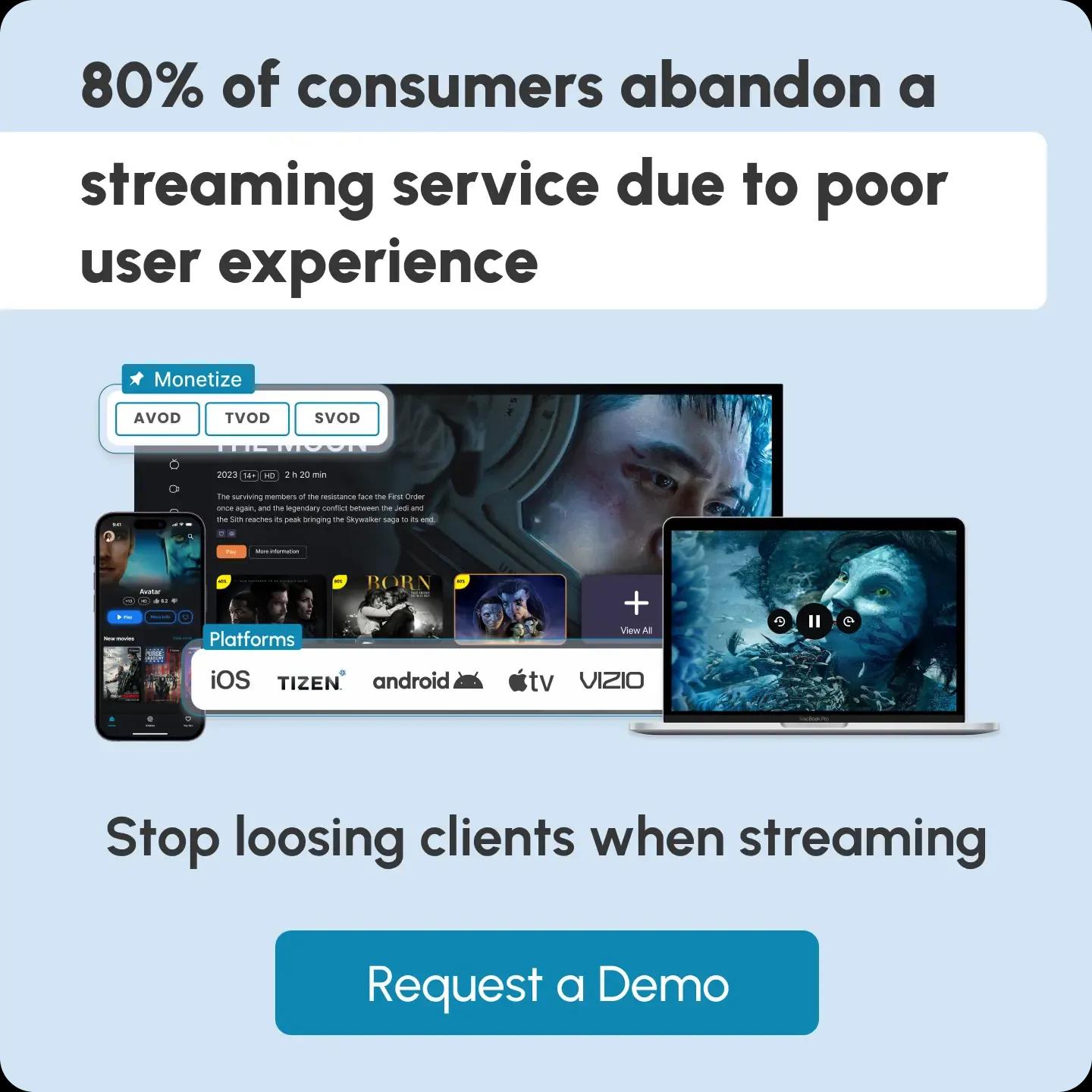Glossary term
CTV (Connected TV)

What Is CTV?
CTV (Connected TV) is a television that connects to the internet to stream digital video content, either directly (like a Smart TV) or via external devices (like Roku or Apple TV).
CTV enables viewers to access on-demand and live streaming services without traditional cable or satellite. CTV is a subset of OTT (Over-the-Top): OTT refers to all internet-delivered video content, and CTV is a device category within it.
CTV = Internet-connected television used to stream digital video content
Types of Connected TVs
Primary CTV Devices
Deliver internet-based streaming content directly to the TV screen, either built-in or connected:
1. Smart TVs
- Built-in internet and apps (e.g., Netflix, YouTube, Hulu).
- No need for extra hardware.
2. Streaming Devices and Sticks
- Plug into the HDMI port (e.g., Roku, Fire TV Stick, Apple TV, Chromecast).
- Turn any TV with HDMI into a smart, internet-connected TV.
3. Gaming Consoles
- Consoles like PlayStation, Xbox, and Nintendo Switch support streaming apps.
- Popular among younger audiences who game and stream on the same device.
Not Technically CTV (But Can Stream to TVs)
Streaming via mirroring, casting, or physical connection, but the TV itself is not the streaming platform:
1. Laptops, Tablets, and Smartphones (via HDMI or casting): These act as sources, not CTVs. You’re using the TV as a display, not an active streaming platform.
2. Casting Devices (like Chromecast): The casting device (Chromecast, Fire TV) is CTV.
But the phone/tablet used to send the content is not.
What are CTV Ad Formats?
1. In-Stream or Linear Video (OLV) Ads: Appear before, during, and after the main video content.
2. Non-linear or Overlay Ads: Appear when users engage with streaming platforms. Can include small static images, all-to-action buttons, and clickable links.
3. Companion Ads: Can be static images and text, rich media, and creative wrapping around the screen. These ads may appear simultaneously with linear or non-linear ads.
4. Display Ads: Appear in the interface of users’ streaming platforms and websites, such as the menu section, home screen, or inline placement.
5. Audio Ads: Served during audio streaming on Spotify or YouTube Music.
6. Dynamic Ad Insertion (DAI): Inserts personalized ads into streams based on individual user data.
7. 360-degree Video Ads: Showcase products in an immersive way, allowing users to interact with the content.
8. Augmented Reality (AR) Ads: AR ads incorporate elements of augmented reality into the viewing experience.
CTV vs OTT
OTT is both the content and the platform.
CTV is a device that delivers OTT to a TV screen.
| Aspect | OTT (Over-the-Top) | CTV (Connected TV) |
|---|---|---|
| Definition | Delivery of video content over the internet, bypassing traditional cable/satellite | A device or platform that connects to a TV and streams OTT content |
| Scope | A broad category that includes content, platforms, and devices | A subset of OTT, specifically focused on TV-connected devices |
| Devices | Smartphones, tablets, laptops, desktops, Smart TVs, and streaming devices | Smart TVs, streaming sticks (Roku, Fire TV), and gaming consoles |
| Content Access | Available across multiple devices and platforms | Accessed on a TV screen through internet-connected devices |
| User Experience | Often mobile, personal, and on-the-go | Lean-back, communal, living-room-style viewing |
| Ad Targeting | Based on device, app behavior, and user profiles | Based on household and TV device-level viewing data |
| Examples | Netflix, YouTube, Disney+, Hulu, Amazon Prime Video | Roku, Apple TV, Samsung Smart TV, VIZIO, Xbox, PlayStation |
CTV vs Linear TV
CTV provides a flexible, targeted, digital-first TV experience.
Linear TV offers traditional, scheduled programming with a broad reach.
| Aspect | CTV (Connected TV) | Linear TV |
|---|---|---|
| Definition | An internet-connected TV that streams content on-demand or live | Traditional broadcast or cable TV with scheduled programming |
| Delivery Method | Via the internet (streaming platforms and apps) | Over-the-air, cable, or satellite signal |
| Content Access | On-demand, live, or time-shifted via apps | Fixed schedule; viewers must tune in at a specific time |
| Devices | Smart TVs, streaming sticks, gaming consoles | Cable boxes, satellite receivers, and antennas |
| Ad Targeting | Advanced targeting using viewer data and household behavior | Broad targeting based on demographics and regions |
| Viewer Control | High: Pause, skip, rewind, and watch anytime | Low: viewers watch what’s airing at the moment |
| Measurement | Digital metrics: impressions, views, completion rate | Traditional ratings (e.g., Nielsen) |
| User Experience | Personalized, flexible, and interactive | Passive, linear, and often interrupted by longer ad breaks |
| Examples | Roku, Fire TV, Samsung Smart TV, Xbox, YouTube TV | ABC, NBC, CBS, FOX, cable channels like CNN or ESPN |
Examples of Popular CTV Platforms
CTV Platforms (Hardware + OS Ecosystems) that power or run on connected devices:
Roku
Amazon Fire TV
Apple TV
Google TV / Android TV
Samsung Tizen (Smart TVs)
LG webOS
VIZIO SmartCast
Xbox (Microsoft)
PlayStation (Sony)
Frequently Asked Questions
Content Writer
Anush Sargsyan is a content writer specializing in B2B content about OTT streaming technologies and digital media innovation. She creates informative, engaging content on video delivery, OTT monetization, and modern media technologies. The goal is to help readers easily understand complex ideas. Her writing is the bridge between technical detail and practical insight, making advanced concepts accessible for both industry professionals and general audiences.
Related terms

AVOD (Advertising-Based Video on Demand)
Explore how AVOD works, its monetization model, and why it's popular for free streaming platforms. Read the full definition on inorain.com glossary.

CSAI (Client-Side Ad Insertion)
Learn how CSAI delivers ads through the video player, enabling targeting, tracking, and monetization.

